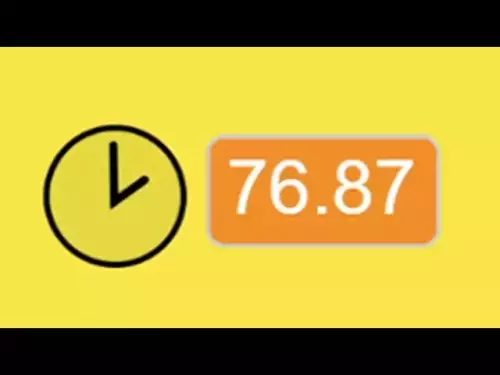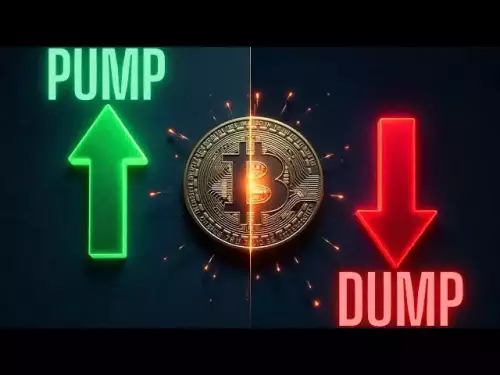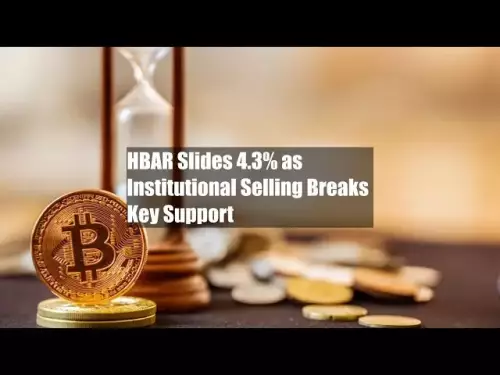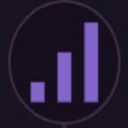-
 bitcoin
bitcoin $111145.080499 USD
0.75% -
 ethereum
ethereum $3928.989005 USD
1.66% -
 tether
tether $1.000226 USD
-0.02% -
 bnb
bnb $1108.209329 USD
-2.26% -
 xrp
xrp $2.545944 USD
6.36% -
 solana
solana $193.960655 USD
0.72% -
 usd-coin
usd-coin $1.000128 USD
0.02% -
 dogecoin
dogecoin $0.199304 USD
2.23% -
 tron
tron $0.297908 USD
-4.88% -
 cardano
cardano $0.656962 USD
2.13% -
 hyperliquid
hyperliquid $39.225782 USD
-1.92% -
 chainlink
chainlink $17.897108 USD
2.99% -
 ethena-usde
ethena-usde $0.999354 USD
-0.02% -
 stellar
stellar $0.321154 USD
3.36% -
 bitcoin-cash
bitcoin-cash $505.299839 USD
5.10%
How to determine the buying and selling points of Bitcoin? What are the technical indicators for reference?
Use moving averages, RSI, Bollinger Bands, and MACD to identify Bitcoin buying and selling points, but always combine indicators for better trading decisions.
Apr 29, 2025 at 01:07 pm
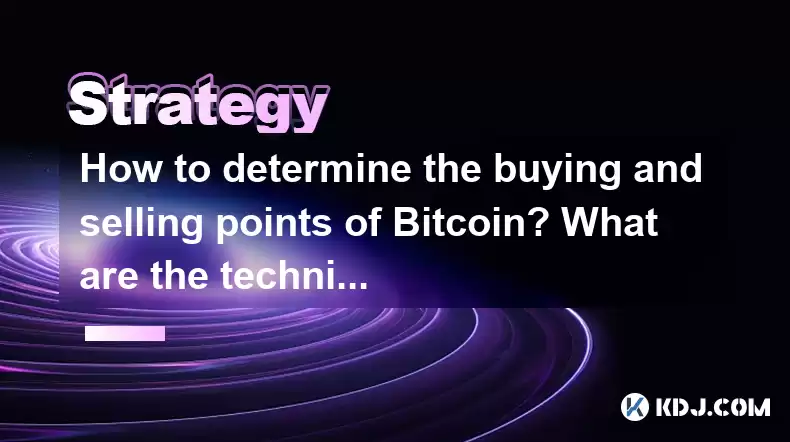
Introduction to Bitcoin Trading
Bitcoin, the pioneering cryptocurrency, has attracted a vast number of traders looking to capitalize on its volatile price movements. Determining the optimal buying and selling points is crucial for maximizing profits and minimizing losses. This article will delve into various technical indicators that traders can use to make informed decisions about when to buy and sell Bitcoin.
Understanding Technical Analysis
Technical analysis is a method used to evaluate investments and identify trading opportunities by analyzing statistical trends gathered from trading activity, such as price movement and volume. Unlike fundamental analysis, which looks at economic factors and company performance, technical analysis focuses solely on the price charts and market data of Bitcoin.
Key Technical Indicators for Bitcoin Trading
Traders use a variety of technical indicators to predict future price movements of Bitcoin. Here are some of the most commonly used indicators:
Moving Averages
Moving averages are one of the simplest yet effective tools for identifying trends. They smooth out price data to create a single flowing line, making it easier to identify the direction of the trend.
- Simple Moving Average (SMA): This is calculated by adding up the closing prices of Bitcoin over a certain number of periods and then dividing by that number of periods.
- Exponential Moving Average (EMA): This gives more weight to recent prices, making it more responsive to new information.
Traders often use the crossover of short-term and long-term moving averages to identify potential buying and selling points. For instance, when a short-term EMA crosses above a long-term EMA, it may signal a buying opportunity, indicating an upward trend.
Relative Strength Index (RSI)
The Relative Strength Index (RSI) is a momentum oscillator that measures the speed and change of price movements. It oscillates between 0 and 100 and is typically used to identify overbought or oversold conditions.
- Overbought: When the RSI exceeds 70, it suggests that Bitcoin may be overbought and due for a price correction.
- Oversold: When the RSI falls below 30, it indicates that Bitcoin may be oversold and could be poised for a price rebound.
Traders can use these levels to determine potential selling points when the RSI is over 70 and buying points when it is below 30.
Bollinger Bands
Bollinger Bands consist of a middle band being an N-period simple moving average, an upper band at K times an N-period standard deviation above the middle band, and a lower band at K times an N-period standard deviation below the middle band.
- Price touching the upper band: This may indicate that Bitcoin is overbought and could be a signal to sell.
- Price touching the lower band: This may suggest that Bitcoin is oversold and could be a signal to buy.
The width of the bands can also indicate the volatility of Bitcoin. Narrow bands suggest low volatility, while wide bands indicate high volatility.
MACD (Moving Average Convergence Divergence)
The MACD is a trend-following momentum indicator that shows the relationship between two moving averages of Bitcoin's price. It consists of the MACD line, the signal line, and the histogram.
- MACD Line: This is the difference between the 12-period EMA and the 26-period EMA.
- Signal Line: This is the 9-period EMA of the MACD line.
- Histogram: This represents the difference between the MACD line and the signal line.
Traders look for crossovers between the MACD line and the signal line to identify potential buying and selling points. A bullish crossover (MACD line crossing above the signal line) may signal a buying opportunity, while a bearish crossover (MACD line crossing below the signal line) may indicate a selling point.
Combining Indicators for Better Decision Making
While individual indicators can provide valuable insights, combining multiple indicators can enhance the accuracy of trading decisions. For instance, a trader might use the RSI to identify overbought or oversold conditions and then confirm the signal with a moving average crossover.
Practical Steps for Using Technical Indicators
Here are some practical steps for using technical indicators to determine buying and selling points for Bitcoin:
- Choose Your Indicators: Decide which indicators you will use based on your trading strategy. Common combinations include RSI with moving averages or MACD with Bollinger Bands.
- Set Up Your Chart: Use a trading platform or charting software to set up your Bitcoin price chart with the chosen indicators.
- Monitor the Indicators: Regularly check the indicators for signals. For example, look for RSI levels above 70 or below 30, moving average crossovers, and MACD line crossovers.
- Confirm Signals: Use multiple indicators to confirm signals. If the RSI indicates an oversold condition and the MACD shows a bullish crossover, it may be a strong buying signal.
- Execute Trades: Once you have confirmed a signal, execute your trade. Set stop-loss orders to manage risk and take-profit orders to secure gains.
Risk Management in Bitcoin Trading
Risk management is crucial when trading Bitcoin due to its high volatility. Here are some strategies to manage risk:
- Use Stop-Loss Orders: These orders automatically sell Bitcoin if the price drops to a certain level, limiting potential losses.
- Diversify Your Portfolio: Don't put all your funds into Bitcoin. Diversify across different cryptocurrencies and other assets to spread risk.
- Set Realistic Goals: Understand that not every trade will be profitable. Set realistic profit targets and be prepared to cut losses.
Frequently Asked Questions
Q: Can technical indicators guarantee profits in Bitcoin trading?A: No, technical indicators are tools that help traders make more informed decisions, but they do not guarantee profits. The cryptocurrency market is highly volatile, and other factors can influence price movements.
Q: How often should I check my technical indicators?A: The frequency of checking technical indicators depends on your trading strategy. Day traders may check indicators multiple times a day, while swing traders might check them less frequently, such as daily or weekly.
Q: Are there any free tools available for technical analysis of Bitcoin?A: Yes, many platforms offer free charting tools with technical indicators. Examples include TradingView, Coinigy, and the built-in charts on exchanges like Binance and Coinbase.
Q: Can I use the same technical indicators for other cryptocurrencies?A: Yes, the same technical indicators can be applied to other cryptocurrencies. However, each cryptocurrency may have different volatility and market dynamics, so it's important to adjust your strategy accordingly.
Disclaimer:info@kdj.com
The information provided is not trading advice. kdj.com does not assume any responsibility for any investments made based on the information provided in this article. Cryptocurrencies are highly volatile and it is highly recommended that you invest with caution after thorough research!
If you believe that the content used on this website infringes your copyright, please contact us immediately (info@kdj.com) and we will delete it promptly.
- Essex Post Office, 5p Coins, and King Charles: A Royal Mint Revelation!
- 2025-10-23 10:30:16
- Waymo's Newark Airport AV Tests: Alphabet's AI Gamble Pays Off?
- 2025-10-23 10:30:16
- King Charles 5p Coins: A Royal Flush in Your Pocket?
- 2025-10-23 10:35:18
- Solana, Crypto Advisory, and Forward Industries: A New York Minute on the Future of Finance
- 2025-10-23 08:51:22
- MAGACOIN: Ethereum Whales Dive into the Hottest Presale of 2025
- 2025-10-23 08:51:22
- Kadena's End of the Road? KDA Token Plummets Amid Project Abandonment
- 2025-10-23 08:55:34
Related knowledge

A Simple Strategy for Scalping Ethereum (ETH) on the 5-Minute Chart
Oct 25,2025 at 01:54pm
A Simple Strategy for Scalping Ethereum (ETH) on the 5-Minute Chart This strategy focuses on short-term price movements of Ethereum using a 5-minute t...

A Guide to Trading Avalanche (AVAX) Perpetual Contracts for Beginners
Oct 25,2025 at 11:36pm
Understanding Avalanche (AVAX) Perpetual Contracts1. Perpetual contracts are a type of derivative product that allows traders to speculate on the pric...

How to Reduce Liquidation Risk on a High-Leverage BNB Position?
Oct 25,2025 at 05:36pm
Understanding Liquidation Mechanics in High-Leverage BNB Trading1. Liquidation occurs when the value of a leveraged position drops to a level where th...

Practical parameter settings for a Bitcoin multi-timeframe moving average system
Sep 18,2025 at 10:54pm
Optimizing Timeframe Combinations for Bitcoin Trading1. Selecting appropriate timeframes is crucial when building a multi-timeframe moving average sys...

How can I filter out false breakouts in Dogecoin high-frequency trading?
Sep 22,2025 at 01:00am
Understanding False Breakouts in Dogecoin Trading1. A false breakout occurs when Dogecoin's price appears to move beyond a defined support or resistan...

Techniques for identifying tops and bottoms in the Bitcoin on-chain NVT model
Sep 20,2025 at 07:54pm
Understanding the NVT Model in Bitcoin Analysis1. The Network Value to Transactions (NVT) ratio is often described as the 'P/E ratio' of the cryptocur...

A Simple Strategy for Scalping Ethereum (ETH) on the 5-Minute Chart
Oct 25,2025 at 01:54pm
A Simple Strategy for Scalping Ethereum (ETH) on the 5-Minute Chart This strategy focuses on short-term price movements of Ethereum using a 5-minute t...

A Guide to Trading Avalanche (AVAX) Perpetual Contracts for Beginners
Oct 25,2025 at 11:36pm
Understanding Avalanche (AVAX) Perpetual Contracts1. Perpetual contracts are a type of derivative product that allows traders to speculate on the pric...

How to Reduce Liquidation Risk on a High-Leverage BNB Position?
Oct 25,2025 at 05:36pm
Understanding Liquidation Mechanics in High-Leverage BNB Trading1. Liquidation occurs when the value of a leveraged position drops to a level where th...

Practical parameter settings for a Bitcoin multi-timeframe moving average system
Sep 18,2025 at 10:54pm
Optimizing Timeframe Combinations for Bitcoin Trading1. Selecting appropriate timeframes is crucial when building a multi-timeframe moving average sys...

How can I filter out false breakouts in Dogecoin high-frequency trading?
Sep 22,2025 at 01:00am
Understanding False Breakouts in Dogecoin Trading1. A false breakout occurs when Dogecoin's price appears to move beyond a defined support or resistan...

Techniques for identifying tops and bottoms in the Bitcoin on-chain NVT model
Sep 20,2025 at 07:54pm
Understanding the NVT Model in Bitcoin Analysis1. The Network Value to Transactions (NVT) ratio is often described as the 'P/E ratio' of the cryptocur...
See all articles





















